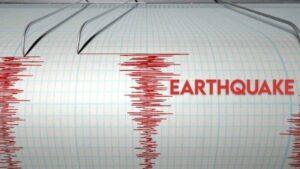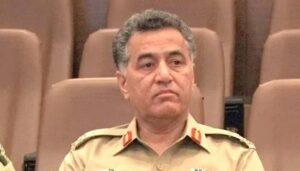Karachi was shaken again Friday morning by two earthquakes, which brought the total number of tremors in six days to 32.
According to Express News, the epicenter of the first earthquake was in DHA, while the second originated in the Malir district.
Last night, residents in the Bhains neighborhood and surrounding areas also felt tremors, causing generalized panic. Many residents left their homes, reciting the kalma.
Since Sunday, Karachi has witnessed multiple earthquakes of low intensity in several locations, growing concerns among the population.
The director of the National Center of the Tsunami in the Department of Meteorology, Ameer Haider Laghari, warned that the Landhi failure line is expected to remain active during the next few days.
He explained that the movements in the underground tectonic layers generate energy that is gradually released, resulting in these recurrent earthquakes.
Previously, according to the National Center of Tsunami (Department of Meteorology of Pakistan), these tremors are not a warning sign of a great natural disaster, but a natural geological process. This activity can help balance the local failure line in the coming years.
Ameer Haider Laghari, head of the Tsunami National Center, explained that the Quaidabad fault line remains active and that the situation could continue up to a week.
The first earthquake in Karachi was recorded on March 31, registering 4.7 magnitude with a depth of 19 kilometers. On the contrary, this last sequence has shown a consistent pattern, specifically in Malir and Quaidabad, where nine earthquakes of low to moderate intensity were produced in two days. Several parts of the city felt the tremors.
In an interview with Express newsAmeer Haider Laghari pointed out that earthquakes come from natural tectonic changes, where accumulated energy on Earth is gradually released, causing seismic activity. He stressed that this is a global geological process, which occurs in some regions more frequently than in others.
He recalled similar tremors in northern Pakistan, where the activation of a failure line caused panic in Islamabad and nearby areas for several days.
READ MORE: 4.6 The earthquake of magnitude is shaken to the northwest of Pakistan
Laghari said that Karachi earthquakes are low intensity, and each posterior tremor has been less intense than the previous one. He also clarified that these are not replicas, since such minor earthquakes generally do not produce replicas, they are independent seismic events.
He warned that Malir, Quaidabad and the surrounding areas can continue to feel tremors for two more days a week. Pakistan is located in a shallow earthquakes, which means that most earthquakes occur at low depths.
He also highlighted other active failures in the region, including Landhi’s failure line, Thea Bula Khan and Foundry Western Kirtha Range Foundry failure.
As a precaution, he informed that structurally weak buildings should quickly evacuate during tremors. People should avoid standing near the walls and, instead, look for open spaces for a temporary refuge.
Provide a broader context, said Dr. Adnan Khan, associate professor and geologist at the University of Karachi PAkGazette Express that these were minor tremors and not a cause of alarm.
He explained that Karachi is located in a passive tectonic margin, far from any important failure line, causing large and destructive earthquakes to be very unlikely in the region.
“These tremors are classified as mild, as a result of minor tectonic movements and accumulation of stress in the depths of the earth’s crust,” said Dr. Khan.
READ MORE: 3.6 Quake of magnitude is shaken Quetta
He also linked these movements indirectly with the tectonic activity of the Himalaya, where the change to the north of the mountain range, 4 to 5 cm annual, can generate distant tectonic pressures, occasionally manifesting as low intensity earthquakes even in distant areas such as Karachi.
Dr. Khan also pointed out human factors that can play a subtle role in the alteration of underground stability, including the incineration of industrial waste and excessive extraction of groundwater, which can influence local seismic behavior over time.
While scientific consensus remains that these tremors are harmless, both Laghari and Dr. Khan emphasized the importance of basic security awareness.
Dr. Khan also advised citizens to remain calm during any tremor and move immediately to open areas, staying away from the walls, foundations or high structures.




